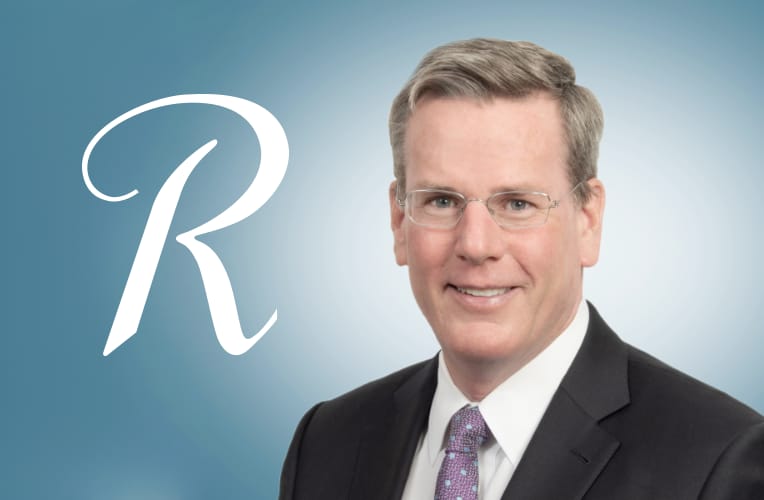Property catastrophe reinsurance business is now deemed to be “broadly” rate adequate for the investors his firm cedes risk to, according to RenaissanceRe CEO Kevin O’Donnell, who also warned that this needs closely watching as any slip away from adequacy could cause capital to exit the space.
 O’Donnell believes that investors have not been adequately compensated for the volatility they have assumed in property catastrophe reinsurance through recent years and that only now are rates back at, or around, adequate again.
O’Donnell believes that investors have not been adequately compensated for the volatility they have assumed in property catastrophe reinsurance through recent years and that only now are rates back at, or around, adequate again.
Speaking about the property cat market during the recent RenaissanceRe earnings call, CEO O’Donnell said, “Overall we leaned heavily into the property cat market in the second-quarter and recorded property catastrophe net written premium growth exceeding 50%. We believe these higher rates will persist.
Going on to state that, “Prior hard markets were driven by losses and tended to be geographically concentrated.
“The current market is being driven by equity and ILS investor sentiment and is geographically broad.”
O’Donnell continued, “In particular, investors are concerned that they had not been adequately compensated for the volatility they experienced and in response, are demanding substantially higher returns to continue taking risks. This is especially true now, as other asset classes provide attractive yields, with less volatility and greater familiarity.
“From our perspective, we are focused on rate adequacy in our property catastrophe business.
“Rate adequacy means, that we expect business to have rate sufficient to provide investors with a return commensurate with the volatility they assume.
“We believe the property cat business is now broadly right adequate.”
Later during the call, O’Donnell continued to discuss the need to ensure rate adequacy for ILS investors, in order to keep their capital in the marketplace.
“What we’re focused on is really getting to a level of rate adequacy, so investors are, both ILS investors and equity investors, are adequately compensated for the volatility and for the risks that they’re taking,” he said.
Adding that, “In general, as a market, I believe we’re there. You know, certain deals are better rated than other deals. So I think there are still opportunities for rate increase.
“But if the market went and renewed as expiring, adjusting for unique idiosyncratic risks within certain companies, I think the market would largely be adequate for 2024.”
He continued, “Investor sentiment, other things will continue to be a factor, as to what adequate means and whether they are relatively satiated with the returns that they’re achieving.
“But looking at it from a more academic perspective, I believe rates are compensating at adequate levels for the volatility we’re observing in our portfolio.
“Our portfolio is a bit unique and we do capture alpha above what we consider to be the market, and then there’s distribution across our owned and rated balance-sheets, provide us additional ability to achieve better than market returns.
“So although we talked about rate adequacy of the market, we believe that we are achieving returns that are above rate adequacy and hence the interest we continue to have in our equity and in our third-party capital vehicles.”
Of course, rate adequacy is not just a point that you reach in a market cycle that remains static. It is a constantly moving feast, as loss costs, expenses and cost-of-capital all change over-time and margins must be achieved above covering those.
That’s what true rate adequacy means and O’Donnell cautioned that, in property cat this will need watching closely.
“That said, inflation and climate change will continue to increase risk, which will require ongoing monitoring and careful management,” O’Donnell explained.
Looking ahead, O’Donnell also warned that capital could quickly leave the market if investors feel they aren’t being adequately compensated anymore.
Here, he pointed to what might happen if there were a storm of a similar size to hurricane Ian, warning that if that did not push rates even higher, he believes some capital would not stick around.
“Any storm of reasonable size is going to unsettle the market. I believe the market is enjoying the benefits of the hard work that we’ve achieved to bring rate adequacy.
“I think there’s still a sense of, or an expectation that results need to be achieved for the market to fully believe that this is adequate.
“Even just a loss of premium, for some place like Florida, will have a material impact on capital’s need for additional rate to continue to serve as the reinsurance market. The size of that is hard to predict.
“But I think it’s one in which, f there’s another Ian type storm, I would expect the market reaction to be at least as strong as what it was last year.
“Perhaps they can’t achieve the same percent rate increase, but I think rate increases would be required for capital to remain committed.”
 View all of our Artemis Live video interviews and subscribe to our podcast.
View all of our Artemis Live video interviews and subscribe to our podcast.
All of our Artemis Live insurance-linked securities (ILS), catastrophe bonds and reinsurance video content and video interviews can be accessed online.
Our Artemis Live podcast can be subscribed to using the typical podcast services providers, including Apple, Google, Spotify and more.































